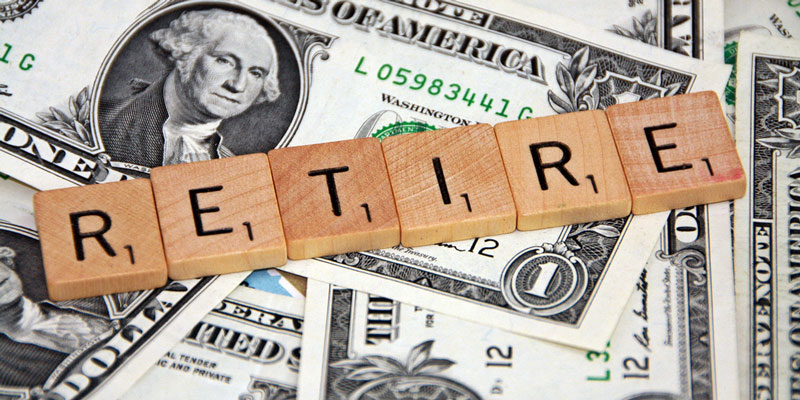Birmingham, Alabama-based financial guru Jeff Roberts, who was recently named one of the top private wealth advisors in the nation by Barron’s®, came on Yellowhammer Radio to lay out the facts so people can decide for themselves.
The full conversation with Mr. Roberts can be heard on the Yellowhammer Radio podcast or in the video above, and a lightly edited transcript of his interview with Yellowhammer’s Andrea Tice and Scott Chambers can be read below.
Subscribe to the Yellowhammer Radio Podcast on iTunes. Learn more about Jeff Roberts’ private wealth advisory practice at JeffRobertsAndAssociates.com.
Andrea Tice:
Hey, welcome back to Yellowhammer Radio. You’re listening to us on Superstation 101.1 WYDE. Andrea Tice here with Scott Chambers and we’re about to introduce Jeff Roberts he’s the founder of Jeff Roberts & Associates. Jeff’s team consists of seven seasoned advisors and together have a hundred and twenty-five years of financial planning with Ameriprise. Barron’s Magazine has placed that company among the top 1,200 financial advising practices in the country. Not once, Scott, not twice, but six times. So you can tell he’s a local guy who’s doing big things. Jeff’s team specializes in working with affluent clients to help them preserve and grow their wealth. So they are the go-to team in town for customized recommendations in regards to estate planning, retirement planning or asset management. So we are very glad to have Jeff on board to keep us financially sound and growing. Hey, Jeff are you there?
Jeff Roberts:
I am. Good to be back.
Scott Chambers:
Yeah we missed you last week. You were out of town doing some work i take it?
Jeff Roberts:
Yes, I was in Las Vegas attending the Barons Top Team Summit for the weekend. It was very insightful and a good conference.
Andrea Tice:
So is Barron’s Magazine going to come out with another listing like you guys have seen before?
Jeff Roberts:
They are and it’s any day now. It fact it’s normally the first week in February but we’re hearing that it may be the first week in March before they come out with their new list of the top 1200 advisors or so.
Scott Chambers:
Well I have a feeling you’re going to be smack dab in the middle of it again, Jeff.
Jeff Roberts:
That may be the case but listen to get it once it’s like winning the Super Bowl. If you get it twice it’s a validation and any more than that is just unimaginable to me.
Scott Chambers:
Six times, Jeff. That’s amazing.
Andrea Tice:
If it goes to seven that’s going to be really impressive.
Jeff Roberts:
It’s hard for me to imagine. We just want to serve our clients well and if the accolades come that’s even better.
Andrea Tice:
Well you know, Jeff, if you happen to get seven Scott and I will be happy to come down to your office and provide party ambience. You provide the food but we’ll be there to eat it.
Scott Chambers:
You know, Jeff, something interesting while you were out of town and this has been going on for a little while now but now while you’re out of town the market really started hitting just record all-time highs. What the heck can we take away from that?
Jeff Roberts:
It is exciting and it’s good. We love all-time highs and you know i always talk with you guys about themes and topics that hear about during my meetings during the week when we’re sitting down with our clients. It’s interesting because when markets hit all-time highs you would think that everybody’s all excited this is great and high five but actually it’s amazing how fear sets in and people begin to think because the market is hitting an all-time high that means I need to get out and it’s going to be bad. So we’re going to touch on that a little bit today in terms of just some historic numbers and patterns. I’m going to reference a lot of data and percentages and the main thing I gotta tell you is I’m getting it from a lot of sources. They’re good friends at at JP Morgan provides a great deck of the information. Fidelity Investments also gives us some of the stats and I’m going to give you. And then there are simple websites where we can gather historic information like BigCharge.com or DQYDJ or Yahoo Finance all can compile this data. But first, to understand what this stuff is let’s just talk about the Dow just generally because most people follow the Dow Jones Industrial Average. It started back when Charles Dow started his first index in the 1884 but it was until 1896 that the industrial index first came out. It was just 12 stocks at that time that kind of made up the industrials. I’m just curious do you all happen to know, here’s a question, how many stocks comprised the Dow Jones Industrial Average today by chance?
Andrea Tice:
Ok, just so we’re clear, Jeff, stocks indicate the individual stocks represent a company?
Jeff Roberts:
Individual stock represents one company and the Dow Jones is a collection of a measurement of a certain number of stocks. I’ll give you the answer it’s 30.
Scott Chambers:
I was going to go to guess 30.
Andrea Tice:
He was not guessing. He was googling it.
Jeff Roberts:
I should have realized you guys have the laptop there. 30 stocks comprise the Dow and now here’s an interesting one. Keep in mind the Dow has been around a hundred twenty years, can any of you guys guess which company has been on the original list all the way back hundred twenty years?
Andrea Tice:
One hundred and twenty years, oh my gosh. I’ve got to think of a company that’s been around. Can Ford Company be on that? Because that’s been around.
Scott Chambers:
I’m gonna say General Electric.
Jeff Roberts:
There you go bud.
Scott Chambers:
I didn’t google that, Jeff Roberts.
Jeff Roberts:
So yeah that’s the one company that’s been on there the entire time. The list changes from time to time and and reflects today versus years ago when it was maybe more railroads and that sort of thing. Then there’s indexes that are maybe a little bit broader like the S&P 500 index that is a listing of 500 stocks as opposed to just 30 which might be a little bit broader view of what the markets doing. It dates back to 1923 in its original form called the Composite Index and then started with 500 stocks actually in 1957. Alright, all you need to know about the basics. Let’s talk about the US stocks. You know they’re hitting all-time highs, some people are getting nervous and so you know maybe we need to get some perspective on what that actually looks like. There’s an economist, Ken Galbrath back in no gosh he was probably back in his prime back in the fifties and he has a quote that says, “the is the function of economic forecasting is to make astrology look respectable.” As we begin to pontificate markets and projecting and past performance, who knows where markets are going to go but here’s some perspective. If you look at the Dow which is what most people see when they paying attention to the market the stock market and if we go back 90 years of history and you look at what’s the average performance been of the Dow for the last 90 years. The number from January of 1926 to January 2017 the average returns 9.76 percent roughly. So let’s just round that up and call it 9.8 percent roughly. So you’ve got a machine for 90 years its average 9.8 and people say “yeah but that’s over 90 years, Jeff. That’s not indicative of anything. That’s not relative to us.” Lets do 20 years, so if you go from 1996 to 2017 the average 9.1 on the Dow. And if you go back 10 years from 2016 to 2017 its average is 8.44. So a little bit less but remember we also had during that 10 year period we had the second-worst period of time in a market history which was the great recession in 2008. Y’all remember that?
Scott Chambers:
I can’t forget that one.
Jeff Roberts:
If we go back five years the last five years in markets average 11.8. If you think about this you say, well Jeff, whether we die set 5 years, 10 years, 20 years, 80 years it’s gone between roughly eight and a half and 12% so let’s call it to you somewhere around ten percent with the market is historically done when you just look at the averages. You think about a performance number that’s actually pretty good. Year-to-date the market’s up 4.1 percent as of the market today. If you look at what’s happened with the markets since Trump got elected it’s up about twelve percent since election day. We’ve seen strong performance. Here’s the question I would ask right so if you’ve got a machine that’s been cranking out roughly 9.8 call it 10 percent return for the last 90 years on average and at 10 percent your money is doubling about every roughly seven point two years roughly. So if we’ve had this machine it’s cranking out money that doubles every seven-plus years, why isn’t every American wealthy? Why isn’t everyone benefiting from this? Well, the reason that I’ve contended this for years when I do workshops, because I think we as Americans tend to believe in things that don’t exist. Like Elvis is still alive or Bigfoot or something like that but you know we believe that the markets gonna crash and go down forever. It’s gonna go to zero and we make up these scenarios in our heads which cause our behavior related to investing in the markets to be altered. We tend to focus on the negative and what’s TV and the news do? It adds to that so just because markets are hitting all-time highs that doesn’t mean panic, scare and run. and that’s what unfortunately happens with people. They’re coming in my office and they’re scared because the markets are hitting the high and so my statement to people is, this is kind of a broad statement but, markets are pretty much always going to hit all times. Because if you look at that 90-year trend what do markets do? They always go up over time. They have crazy and wild volatility along the way but generally stocks always go up over time so they’re always going to be hitting highs but we tend to focus on those negatives in those short periods of time. Like I’ll give you an example, if you go back to the last 37 years and you look at the swings of the market every single year, one year at a time all the way back to say 1980. The average decline in any year of the stock market, meaning from January to December the amount level of decline the stock market could have had on average all the way back 36 years. The average has been 14.2 percent on the downside in any given year for the last 37 years. So you think about those things and you say, “Jeff, you’re saying that any given year in the last 36 years the stock market has averaged at some point during the year a decline the 14 percent?” Yes. So that means if you’re investing your money in stocks you need to be comfortable with the fact that it could swing in any year 14 percent. Yes, true statement but sometimes people forget that because if we’ve gone for a year or two and we haven’t had a swing down like that and people start comfortable and then all of a sudden they drop 14% in the year or 15% or something like that then people get nervous panic and move to the side. That machine that cranks out that historic return is no longer working when you sit on the sidelines. So to get the averages you have to have the pluses and minuses and so what we’re experiencing now is good market performance but we don’t want to move to the side just because things are doing well. Here’s another statistic that’s kind of interesting, I had a client say, “Yeah but Jeff, my gosh it’s doubled to twenty thousand dollars just in roughly the last six and a half years.” Because the Dow is at 10,000 in July of 2010 and so it went from July of 2010 at 10,000 now to 20,000. That’s about 11% return roughly over that period of time which is a little bit better than the market is averaged for a long period but it’s not crazy high. But what people forget about is the markets overvalued and that’s what their thinking is. Because of that that analogy I just gave, let’s put it into greater perspective. The first time the Dow Jones broke 10,000 for the first time wasn’t July of 2010. The first time it ever broke through was in April of 1999 which was 18 years ago. So it actually doubled from 10,000 to 20,000 today over an 18 year period of time. Which is not nearly a high return. To keep this in perspective, the Dow to 20,000 today is just a double of where the market was in 1999. Does that make sense? My thing that I try to message to clients is this, you know as I mentioned on average we’ve seen historically for 36 years stocks dropped somewhere a year about 14% on average intra year. About every three months historically. If we go back to 1926 stocks dip about 5% on average every three months. Dating back to 1926 every eight months on average they go down 10% and every two and a half years on average, since 1926 stocks dropped 20%. We’ve gone eight years since a drop of that size which is one of the longest stretches. So our message to people is this, don’t panic just because stocks are hitting the high. Be rooted in a well-diversified portfolio but remember that the performance that you get in your investment is a combination of two things, the investment results of the markets that were in plus investor behavior. Investor behavior is the part that we as advisors trying to help clients influence. Make sure they’re not doing the wrong thing at the wrong time.
Scott Chambers:
Just be in it for the long haul. It’s a long haul thing, no need to panic. This is the thing you’re in for the long haul.
Andrea Tice:
And it sounds to me like, Jeff, you’re providing the fuller context of someone who studies it knows that the stats on the long-haul like a hundred years and can say let’s put it in perspective. Here’s your full spectrum don’t panic.
Jeff Roberts:
That’s correct. We focus very heavily on investor behavior because that’s the part we can control the most.
Scott Chambers:
Jeff Roberts you are an awesome man. Jeff Roberts and Associates, tell people how they can get in touch with you good sir.
Jeff Roberts:
Give us a buzz at 205-313-9150 or JeffRobertandAssociates.com.
Scott Chambers:
Jeff Roberts from Jeff Roberts & Associates we look forward to talking to you again next Wednesday, Jeff.












